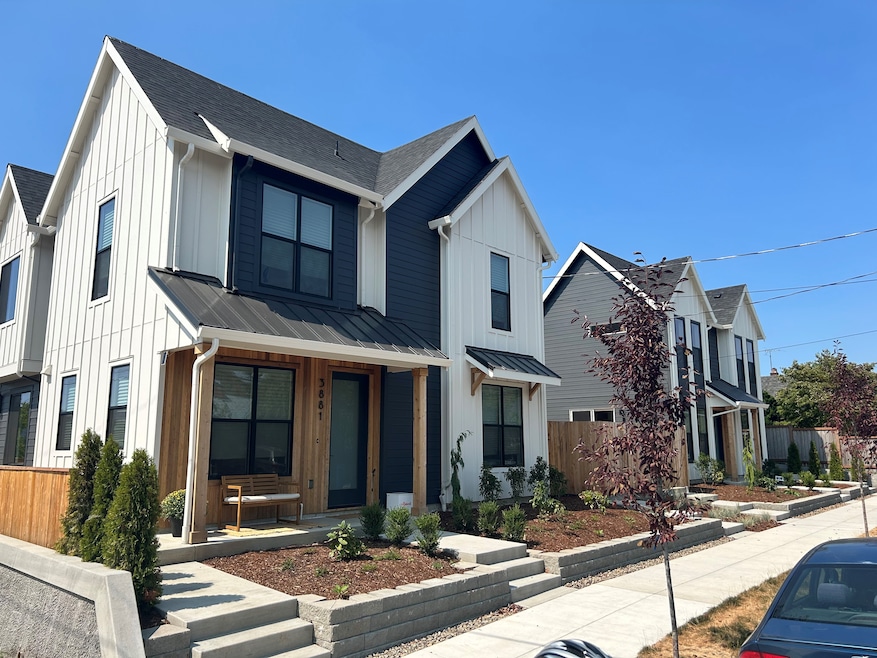What some call “missing middle” housing — not single-family houses or large condo and apartment buildings, but the homes in between — may be on the verge of a renaissance in this country.
Think duplexes, townhouses and the like.
Allowing more housing variety can help address the shortfall of small or starter homes, but it will take more than recognizing the value of these more diverse home types to bring them back to cities and towns, one policy expert says. It’s one thing to change regulations to allow them in neighborhoods where single-family housing has been the only option for generations. It’s another thing to show that building these home types can be financially viable.
Quite a few cities, towns and counties have shaken up their regulations to make it easier to build more housing types. They include Portland, Oregon, which permitted 1,400 non-single-family homes between August 2021 and June 2024, and Arlington County, Virginia, near Washington, D.C. But progress has been slow.
Historically, missing middle housing, typically buildings with two to 19 units, was common in urban neighborhoods, Amy Love Tomasso, policy innovation director at Ivory Innovations, a nonprofit housed at the University of Utah’s Eccles School of Business, said during an online presentation last week for Harvard University’s Joint Center for Housing Studies.
But due in part to fears that it would hurt single-family property values, such housing became rare in the past century. Tomasso offered the example of the triple-decker, a housing type in which the property owner often owned one unit and rented out the other two. In the early 1900s, triple-deckers were ubiquitous in New England cities like Boston, but hardly any have been built since the 1930s due to restrictive zoning laws.
Tomasso recently completed a three-part Joint Center report that surveyed the missing middle landscape and offered tips on how to make it legal and implement it.
“Focus on the fact it was once common, and it’s about bringing it back, not taking something away,” Tomasso advised during her presentation.
Some actions to encourage construction
Tomasso listed six actions local governments and housing advocates can take to speed up development:
1. Give developers access to pre-approved plans. Design accounts for around 10% of the total cost of developing housing, Tomasso said, and most developers and builders don’t have experience creating home types other than single-family residences and apartment buildings. As an example of how to overcome this obstacle, she pointed to the Vermont Homes for All Toolkit, which gives developers access to pre-approved designs.
2. Boost the supply of small-scale builders. In many cities, there’s a dearth of builders who are interested in this type of housing, since it’s not what they’re used to. To address this, programs like Austin, Texas’ Equitable Development Initiative offer free training with technical assistance and funding to create a critical mass of builders that want to invest in their neighborhoods.
3. Identify development-ready sites for missing middle homes. Beyond legalizing more varied housing types, cities need to identify locations suitable for them, Tomasso said. She cited the example of Kelowna, a city in British Columbia, Canada, that has identified some 1,300 underutilized house lots that are appropriate for missing middle construction.
4. Encourage off-site construction. Building homes partly in a factory environment and then transporting them to sites for completion can cut costs by up to 50%, Tomasso said.
5. Create new funding sources. There’s a mismatch between the traditional ways housing is financed and missing middle home types, which lenders perceive as riskier Tomasso said. She proposed that states offer tax credits and loans to builders who want to go beyond single-family homes. A promising example is in Oregon, which has set up a fund to finance development costs for high-risk housing.
6. Establish a statewide office to coordinate activity. This office can serve as a liaison between state and local governments, developers and funders, helping the various parties overcome shared obstacles.
The end goal, Tomasso said, is to produce a variety of housing types that give homebuyers and renters more options, not just in terms of the physical living space, but also in terms of the cost. Given how widespread the housing crunch is around the country, she said, the time is now for the missing middle to take root.
“The issue of housing affordability affects everybody,” she said.

